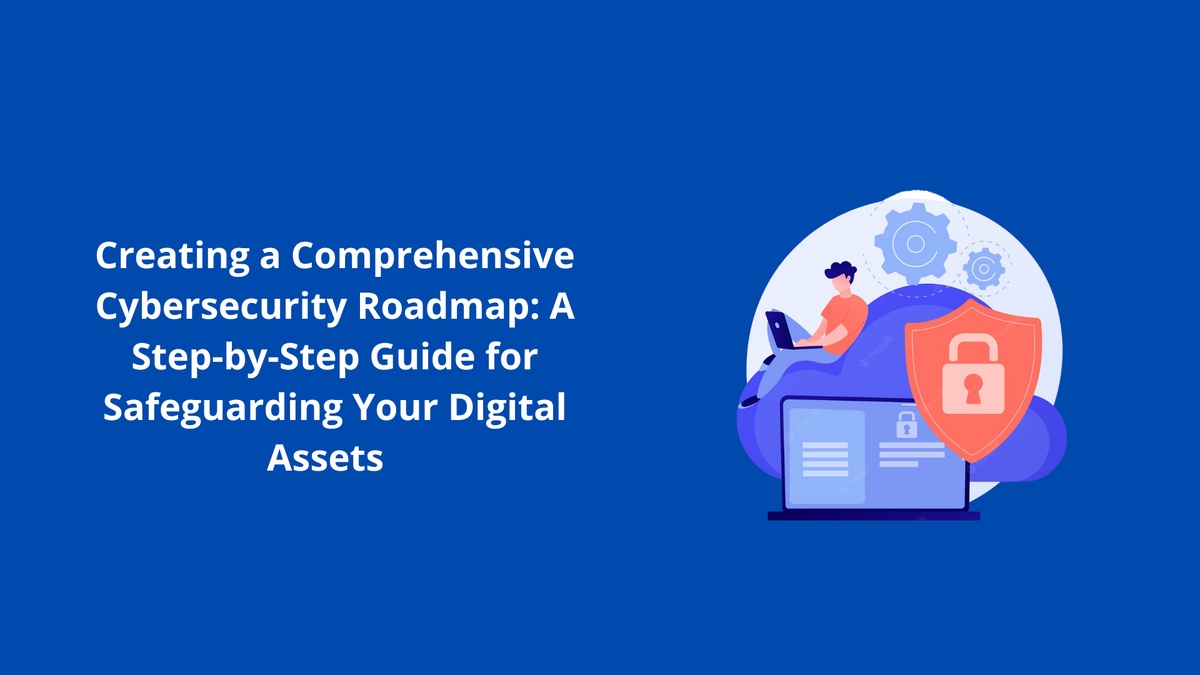where digitalization is the norm, and data drives businesses, the importance of cybersecurity cannot be overstated. With the ever-evolving threat landscape, it has become imperative for individuals and organizations alike to establish robust defences to safeguard their digital assets. Developing a well-structured Cybersecurity Roadmap is a proactive approach that can help navigate these challenges effectively. This comprehensive guide will include the intricacies of creating a cybersecurity roadmap, offering a step-by-step approach to fortify your digital fortress and protect your invaluable information from cyber threats.
Table of contents
- Understanding Cybersecurity Roadmap?
- Assess the Current Security Landscape
- Define Clear Objectives
- Prioritize Security Measures
- Develop a Comprehensive Strategy
- Allocate Resources
- Implement Security Measures
- Employee Training and Awareness
- Continuous Monitoring and Incident Response
- Compliance and Regulatory Adherence
- Regular Assessment and Improvement
- Conclusion
Understanding Cybersecurity Roadmap?
A cybersecurity roadmap is a strategic and structured plan that outlines an organization's approach to safeguarding its digital assets and sensitive information from cyber threats. It is a guiding document that charts a course for enhancing the organization's cybersecurity posture. This roadmap involves well-defined steps, objectives, and priorities that collectively create a comprehensive defence strategy against a wide range of cyber risks.
The roadmap begins with assessing the organization's current security landscape, identifying vulnerabilities and potential entry points for cyberattacks. Clear objectives are then set based on the assessment, aligning with business goals and risk tolerance. Prioritization of security measures follows, considering the potential impact of breaches and the likelihood of occurrence.
The roadmap further encompasses the allocation of resources, implementation of security measures, continuous monitoring, employee training, and compliance adherence. Regular assessment and improvement ensure the cybersecurity roadmap remains adaptable to evolving threats. In essence, a cybersecurity roadmap provides a systematic and proactive approach to protect digital assets and ensure business continuity in the face of an ever-changing cyber threat landscape.
Assess the Current Security Landscape
Before embarking on any cybersecurity initiative, evaluating your current security posture is crucial. Conduct a comprehensive assessment of your digital assets, networks, systems, and vulnerabilities. Identify potential entry points for cyberattacks and assess the effectiveness of your existing security measures. This assessment lays the foundation for tailoring your cybersecurity roadmap to your needs.
Define Clear Objectives
Set clear and realistic cybersecurity objectives based on the assessment. These objectives should align with your business goals and risk tolerance. Whether it's ensuring the confidentiality of customer data, safeguarding intellectual property, or maintaining operational continuity, defining objectives will guide your roadmap's development.
Prioritize Security Measures
Not all security measures are made equal, and resources are often limited. Prioritize security initiatives based on the potential impact of a breach and the likelihood of occurrence. This involves considering data sensitivity, regulatory compliance, and industry standards.
Develop a Comprehensive Strategy
With your objectives and priorities in place, design a comprehensive cybersecurity strategy. This strategy should encompass a multi-layered defence approach, including network security, endpoint protection, data encryption, access controls, and employee training. A well-rounded strategy addresses various attack vectors, minimizing the risk of a single point of failure.
Allocate Resources
Allocate resources, including budget and personnel, to implement your cybersecurity strategy. The allocation should be based on the priorities and criticality of the security measures. Investing in robust cybersecurity tools and hiring skilled professionals can significantly enhance your defence capabilities.
Implement Security Measures
Execute the planned security measures in alignment with your strategy. This may involve deploying firewalls, intrusion detection systems, antivirus software, encryption tools, etc. Regularly update and patch these tools to ensure their effectiveness against emerging threats.
Employee Training and Awareness
Human error remains one of the weakest links in cybersecurity. Create regular training sessions to educate employees about best practices, social engineering tactics, and how to identify potential phishing attempts. An informed workforce can act as an early warning system against cyber threats.
Continuous Monitoring and Incident Response
Implement continuous monitoring tools to detect and respond to security incidents in real-time. Develop an incident response plan detailing how to mitigate the impact of a breach, communicate with stakeholders, and restore normalcy swiftly. Regularly test and refine this plan to ensure its efficacy.
Compliance and Regulatory Adherence
Depending on your industry, you may be subject to various compliance regulations. Ensure that your cybersecurity roadmap aligns with these regulations and standards. This not only safeguards your digital assets but also prevents legal and financial repercussions.
Regular Assessment and Improvement
Cybersecurity is not a one-time endeavour but requires constant vigilance and adaptation. Regularly assess the effectiveness of your security measures, address emerging threats, and refine your roadmap accordingly. This iterative process ensures that your defences stay ahead of cybercriminals' evolving tactics.
Conclusion
Creating a comprehensive cybersecurity roadmap is a strategic endeavour that empowers you to protect your digital assets against the ever-changing threat landscape. You can significantly enhance your cybersecurity posture by assessing your current security landscape, defining clear objectives, prioritizing security measures, and implementing a well-rounded strategy. Remember that cybersecurity is an ongoing process that demands continuous monitoring, employee education, and regulatory adherence. By following these steps and staying active, you can confidently safeguard your invaluable digital assets and navigate the digital realm. Your cybersecurity roadmap is your compass to a secure digital future.


No comments yet